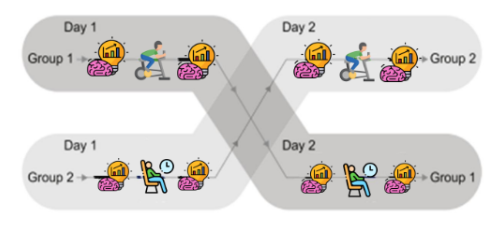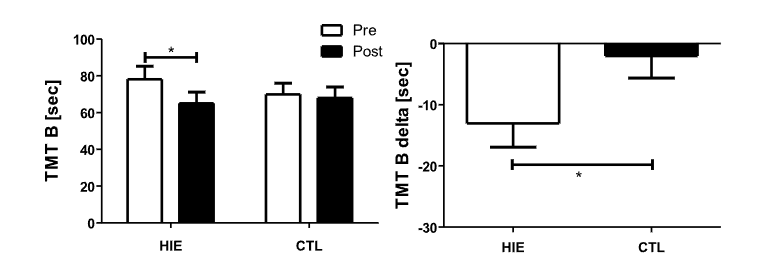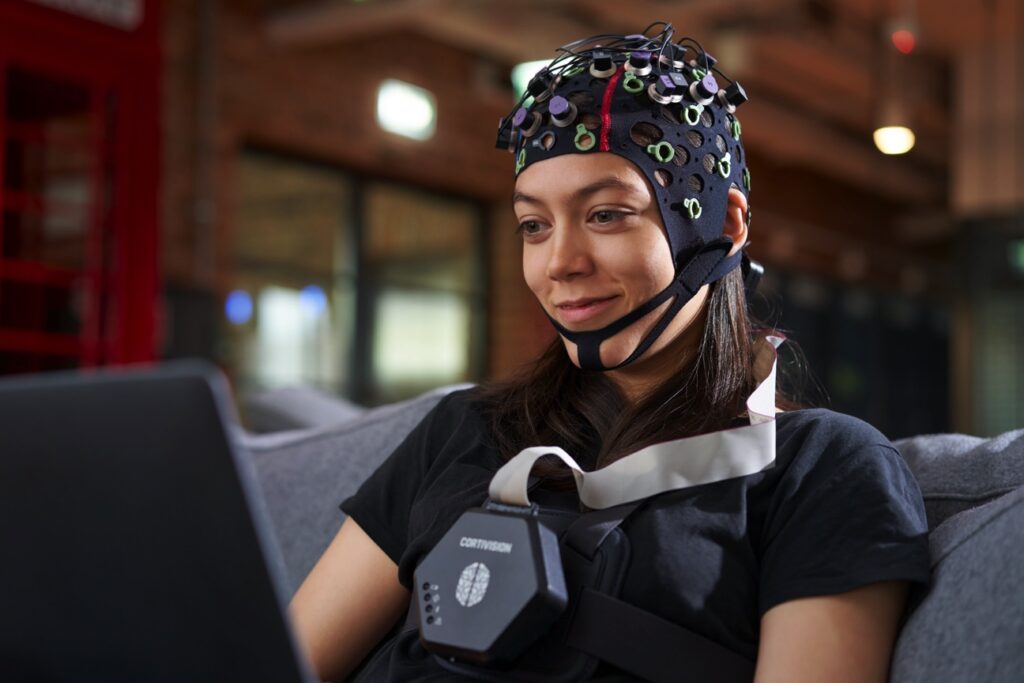The use of near-infrared spectroscopy in the areas of mobility, accessibility, and integrability has increased significantly in recent years (Herold et al., 2018). These include activities that are related to cycling, running, and dancing. Investigating the effects of physical activity on cognitive functioning using fNIRS finds its unique application in the study of human cognition in motion.
A group of researchers from Poland used the fNIRS Photon Cap device to investigate the effects of HIE on executive function among elderlies, focusing on the neuronal substrate (Skurewicz et al., 2023).
Participants
The researchers studied a group consisting of healthy, physically inactive 16 seniors whose age were over 65 years. FNIRS was used on areas of the dorsolateral prefrontal cortex and medial frontal gyrus.

Fig 1. Experimental protocol: experiment consisted of two sessions, control (CTL) and high-intensity interval excercise (HIE) separated by at least one week.
Procedure
The experiment consisted of two sessions, control (CTL) and high-intensity interval exercise (HIE), separated by at least a week. Each session was conducted, in a randomized and balanced manner, with half of the participants starting with the session with HIE.
The HIE protocol consisted of eight 60-second cycles at 90% VAT, corresponding to ~90 HR of maximum intensity and a 30-second rest.

Results
HIE contributed to a significant, shorter execution time in the TMT-B test. Moreover, an increased prefrontal activation (DLPFC and MFG) has been observed following an acute bout of HIE.
The researchers indicate that the results suggest that the proposed HIE protocol can effectively improve executive function among older people. The increased prevalence of cognitive impairment makes there an urgent need for comprehensive research to elucidate the effects of targeted exercise interventions on improving cognitive function.
Lövdén, M., Fratiglioni, L., Glymour, M. M., Lindenberger, U., & Tucker-Drob, E. M. (2020). Education and Cognitive Functioning Across the Life Span. Psychological Science in the Public Interest, 21(1), 6–41. https://doi.org/10.1177/1529100620920576
Whitty, E., Mansour, H., Aguirre, E., Palomo, M., Charlesworth, G., Ramjee, S., Poppe, M., Brodaty, H., Kales, H. C., Morgan-Trimmer, S., Nyman, S. R., Lang, I., Walters, K., Petersen, I., Wenborn, J., Minihane, A.-M., Ritchie, K., Huntley, J., Walker, Z., & Cooper, C. (2020). Efficacy of lifestyle and psychosocial interventions in reducing cognitive decline in older people: Systematic review. Ageing Research Reviews, 62, 101113. https://doi.org/10.1016/j.arr.2020.101113
Leahy, A. A., Mavilidi, M. F., Smith, J. J., Hillman, C. H., Eather, N., Barker, D., & Lubans, D. R. (2020). Review of high-intensity interval training for cognitive and Mental Health in Youth. Medicine & Science in Sports & Exercise, 52(10), 2224–2234. https://doi.org/10.1249/mss.0000000000002359
Herold, F., Wiegel, P., Scholkmann, F., & Müller, N. G. (2018). Applications of Functional Near-Infrared Spectroscopy (fNIRS) Neuroimaging in Exercise–Cognition Science: A Systematic, Methodology-Focused Review. Journal of Clinical Medicine, 7(12), 466., p. 5-9, https://doi.org/10.3390/jcm7120466
Skurewicz, M., Sawicka, A., Śmiałowska P., Marcinkowska A., Grzywińska M., Chroboczek M., Laskowski R., Kujach S., (2023). The effect of high-intensity interval exercise on executive performance and prefrontal cortex activation among elderlies – a fNIRS study. “Free Radicals in Biology, Medicine, Sport and Nutrition”, Gdańsk
